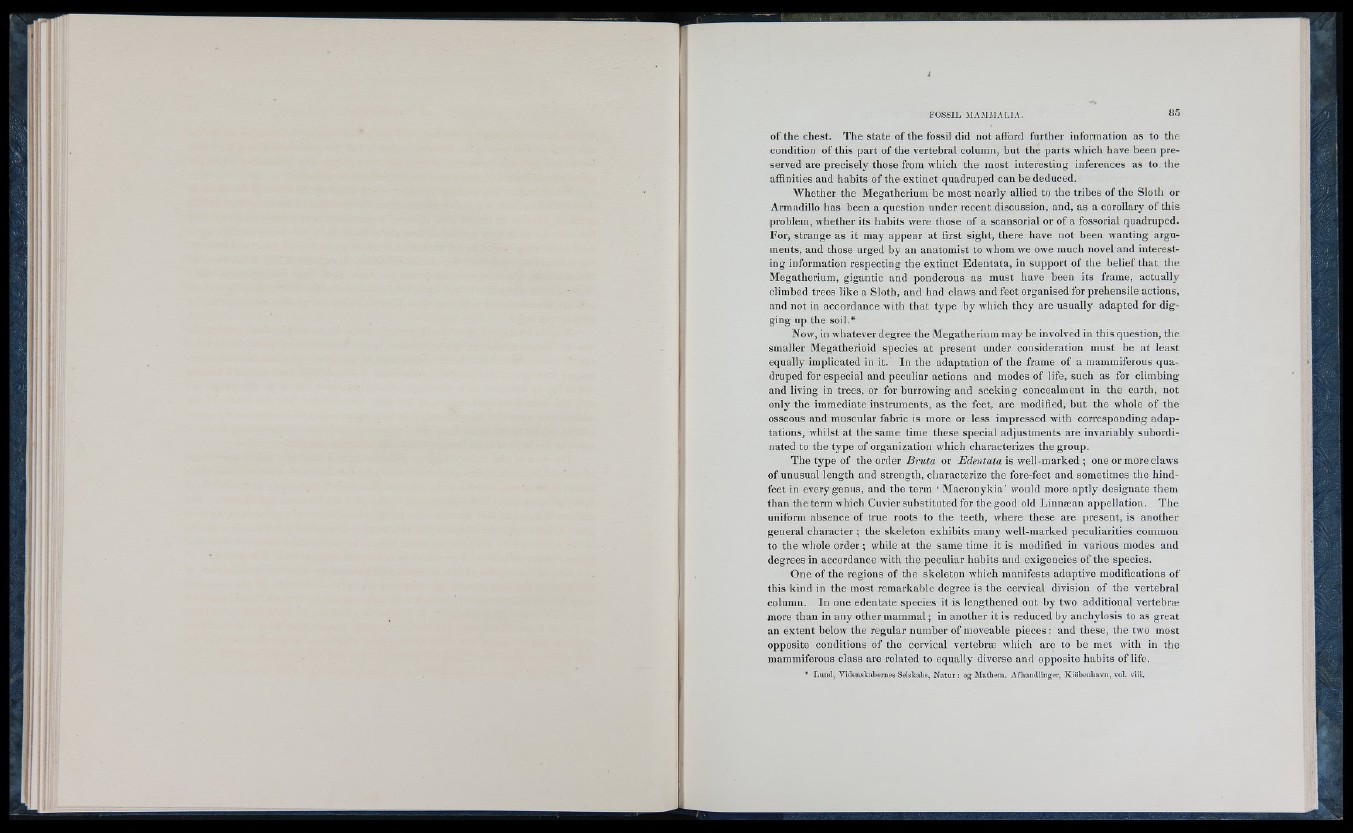
o f the chest. The sta te o f the fossil did not afford further information as to the
condition o f this part o f the vertebral column, but the parts which have been preserved
are precisely those from which the most interesting inferences as to the
affinities and habits o f the ex tinc t quadruped can be deduced.
Whether the Megatherium be most nearly allied to the tribes o f the Sloth or
Armadillo has been a question under recent discussion, and, as a corollary of this
problem, whether its habits were those o f a scansorial or o f a fossorial quadruped.
For, strange as it may appear at first sight, there have not been wanting arguments,
and those urged b y an anatomist to whom we owe much novel and interesting
information respecting the ex tinc t Edentata, in support o f the b e lie f that the
Megatherium, gigantic and ponderous as must have been its frame, actually
climbed trees like a Sloth, and had claws and feet organised for prehensile actions,
and not in accordance with that type by which they are usually adapted for digging
up the soil.*
Now, in whatever degree the Megatherium may be involved in this question, the
smaller Megatherioid spe cie s at present under consideration must he at least
equally implicated in it. In the adaptation o f the frame o f a mammiferous quadruped
fo r e sp e c ia l and peculiar actions and modes o f life, such as for climbing
and living in trees, or for burrowing and seek in g concealment in the earth, not
only the immediate instruments, as the feet, are modified, but the whole o f the
osseous and muscular fabric is more or le ss impressed with corresponding adaptations,
whilst at the same time these special adjustments are invariably subordinated
to the type o f organization which characterizes the group.
The type o f the order B ru ta or Edentata is well-marked ; one or more claws
o f unusual length and strength, characterize the fore-feet and sometimes the hind-
feet in every genus, and the term ‘ Mac ronykia’ would more aptly designate them
than the term which Cuvier substituted for the good old Linnæan appellation. The
uniform absence o f true roots to the teeth, where these are present, is another
general character ; the skeleton exhibits many well-marked peculiarities common
to the whole order ; while at the same time it is modified in various modes and
degrees in accordance with the peculiar habits and ex ig en c ie s o f the species.
One o f the regions o f the skeleton which manifests adaptive modifications o f
this kind in the most remarkable degree is the cervical division o f the vertebral
column. In one edentate spe cie s it is lengthened out by two additional vertebræ
more than in any other mammal ; in another it is reduced by anchylosis to as great
an ex ten t below the regular number of moveable piec es : and these, the two most
opposite conditions o f the cervical vertebræ which are to he met with in the
mammiferous cla ss are related to equally diverse and opposite habits o f life.
* Lund, Videnskabornes Selskabs, Natur : og Mathem. Afliandlinger, Kiobeiihavn, vol. viii.